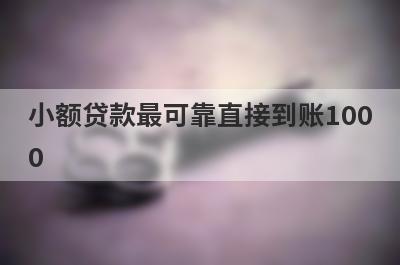用PyMOL展示配体和受体相互作用的原子和氢键
为了简化展示过程,我们设计了一个pml脚本 (脚本内有很详细的解释),只需要修改脚本里面受体和配体的名字,然后在PyMOL的命令行界面输入PyMOL> run display.pml即可获得展示结果。当然这个脚本也可以使用程序generatePmlForHbond.py生成。

###############################################################All one needs to do is replacing: ##### * Protein structure file: E:\docking\1hsg_prot.pdb ##### * Protein name: 1hsg ##### * Docking result file: E:\docking\indinavir.pdbqt ##### * Docking result name (normally ligand name): indinavir## ############################################################# The following 4 lines: # 1. load protein structure and rename it # 2. add hydrogen (`h_add` uses a primitive algorithm to add hydrogens onto a molecule.) # 3. hide protein display # 4. show cartoon display for proteinload E:\yunpan\docking\1hsg_prot.pdb, 1hsgh_add 1hsghide everything, 1hsgshow cartoon, 1hsgcmd.spectrum("count", selection="1hsg", byres=1)# The following 6 lines: # 1. load ligand structure and rename it # 2. add hydrogen # 3. hide ligand display # 4. show ligand in sticks mode # 5. Set width of stick to 0.15 # 6. Set atom color: C-white;N-blue;O-redload E:\yunpan\docking\indinavir.pdbqt, indinavirh_add indinavirhide everything, indinavirshow sticks, indinavirset stick_radius, 0.15util.cbaw indinavir# The following 1 line: # 1. Select metal ionsselect metals, symbol mg+ca+fe+zn# The following 2 lines: # 1. Set hydrogen donator # 2. Set hydrogen accrptor # `select` creates a named selection from an atom selection. # `select name, (selection)`select h_donator, (elem n,o and (neighbor hydro))select h_acceptor, (elem o or (elem n and not (neighbor hydro)))# The following 4 lines: # 1. Create link between ligand_h_acceptor and prot_h_donator within given distance 3.2 # 2. Create link between ligand_h_donator and prot_h_acceptor within given distance 3.2 # Set filter 3.6 for ideal geometry and filter 3.2 for minimally acceptable geometry # 3. Set red color for ligand_h_acceptor and prot_h_donator # 4. Set blue color for ligand_h_donator and prot_h_acceptor # `distance` creates a new distance object between two selections. It will display all distances within the cutoff. Distance is also used to make hydrogen bonds like `distance hbonds, all, all, 3.2, mode=2`. # distance [ name [, selection1 [, selection2 [, cutoff [, mode ]]]]]distance LaccPdon, (indinavir and h_acceptor), (1hsg and h_donator), 3.2distance LdonPacc, (indinavir and h_donator), (1hsg and h_acceptor), 3.2color red, LaccPdoncolor blue, LdonPacc#distance Fe_C20, (fep and name C20), (heme and name fe))# The following 6 lines: # 1. Select non-hydro atoms of ligands # 2. Select protein atoms within 5A of selected atoms in last step # 3. Label alpha-c(ca) of selected residues with residue name and residue position # 4. Set label color back # 5. Set background white # 6. Hidden hydrogenesselect sele, indinavir & not hydroselect sele, byres (sele expand 5) & 1hsgone_letter ={'VAL':'V', 'ILE':'I', 'LEU':'L', 'GLU':'E', 'GLN':'Q', \'ASP':'D', 'ASN':'N', 'HIS':'H', 'TRP':'W', 'PHE':'F', 'TYR':'Y', \'ARG':'R', 'LYS':'K', 'SER':'S', 'THR':'T', 'MET':'M', 'ALA':'A', \'GLY':'G', 'PRO':'P', 'CYS':'C'}label name ca & sele, "%s-%s" % (one_letter[resn],resi)bg whiteset label_color, blackhide (hydro)# The follwing 5 lines # 1. Comment out this line # 2. Create an object `surrounding_res` to represent selected protein atoms # `create`: creates a new molecule object from a selection. It can also be used to create states in an existing object. # `create name, (selection)` # 3. Display created surface # 4. Set color for surrounding_res # 5. Set transparency for surrounding_res # Transparency is used to adjust the transparency of Surfaces and Slices. # `set transparency, F, selection`#show surface, 1hsgcreate surrounding_res, seleshow surface, surrounding_rescolor grey80, surrounding_resset transparency, 0.5, surrounding_res复制
此外还可以使用如下脚本(list_hbonds.py)输出相互作用的原子及其位置。
# Copyright (c) 2010 Robert L. Campbellfrom pymol import cmddef list_hb(selection,selection2=None,cutoff=3.2,angle=55,mode=1,hb_list_name='hbonds'): """ USAGE list_hb selection, [selection2 (default=None)], [cutoff (default=3.2)], [angle (default=55)], [mode (default=1)], [hb_list_name (default='hbonds')] The script automatically adds a requirement that atoms in the selection (and selection2 if used) must be either of the elements N or O. If mode is set to 0 instead of the default value 1, then no angle cutoff is used, otherwise the angle cutoff is used and defaults to 55 degrees. e.g. To get a list of all H-bonds within chain A of an object list_hb 1abc & c. a &! r. hoh, cutoff=3.2, hb_list_name=abc-hbonds To get a list of H-bonds between chain B and everything else: list_hb 1tl9 & c. b, 1tl9 &! c. b """ cutoff=float(cutoff) angle=float(angle) mode=float(mode) # ensure only N and O atoms are in the selection selection = selection + " & e. n+o" if not selection2: hb = cmd.find_pairs(selection,selection,mode=mode,cutoff=cutoff,angle=angle) else: selection2 = selection2 + " & e. n+o" hb = cmd.find_pairs(selection,selection2,mode=mode,cutoff=cutoff,angle=angle) # sort the list for easier reading hb.sort(lambda x,y:(cmp(x[0][1],y[0][1]))) for pairs in hb: cmd.iterate("%s and index %s" % (pairs[0][0],pairs[0][1]), 'print "%1s/%3s`%s/%-4s " % (chain,resn,resi,name),') cmd.iterate("%s and index %s" % (pairs[1][0],pairs[1][1]), 'print "%1s/%3s`%s/%-4s " % (chain,resn,resi,name),') print "%.2f" % cmd.distance(hb_list_name,"%s and index %s" % (pairs[0][0],pairs[0][1]),"%s and index %s" % (pairs[1][0],pairs[1][1]))#cmd.extend("list_hb",list_hb)#if __name__ == "__main__":cmd.load("E:/yunpan/docking/1hsg_prot.pdb", "1hsg")cmd.h_add("(1hsg)")cmd.load("E:/yunpan/docking/indinavir.pdbqt","indinavir")cmd.h_add("(indinavir)")h_donator = "elem n,o & (neighbor hydro)"h_acceptor = "elem o | (elem n & !(neighbor hydro))"lacc = "indinavir & (elem o | (elem n & !(neighbor hydro)))"ldon = "indinavir & (elem n,o & (neighbor hydro))"pacc = "1hsg & (elem o | (elem n & !(neighbor hydro)))"pdon = "1hsg & (elem n,o & (neighbor hydro))"list_hb(ldon, pacc, hb_list_name="l2p_hbonds")list_hb(lacc, pdon, hb_list_name="p2l_hbonds")复制
输出结果如下:
PyMOL>run E:/docking/list_hbonds.pyB/MK1`902/N4 B/GLY`27/O 3.03B/MK1`902/O4 B/GLY`27/O 3.16B/MK1`902/O2 A/ASP`25/OD1 2.77B/MK1`902/O2 B/ASP`25/OD1 2.63复制
看上去比显示的氢键少了三个,这是因为我们在第二个函数中使用了H-键角度限制,如果在调用时给定参数list_hb(mode=0)则会获得一致结果。
H-bond结果展示。第一张图为运行display.pml后的结果,蓝色虚线为氢键;第二张图为运行list_hbonds.py后的结果, 黄色虚线为氢键(覆盖了之前的蓝色)。可以通过点选LaccPdon, LdonPacc, l2p_hbonds显示不同的氢键。
展示疏水表面
# color_h# -------# PyMOL command to color protein molecules according to the Eisenberg hydrophobicity scale## Source: http://us.expasy.org/tools/pscale/Hphob.Eisenberg.html# Amino acid scale: Normalized consensus hydrophobicity scale# Author(s): Eisenberg D., Schwarz E., Komarony M., Wall R.# Reference: J. Mol. Biol. 179:125-142 (1984)## Amino acid scale values:## Ala: 0.620# Arg: -2.530# Asn: -0.780# Asp: -0.900# Cys: 0.290# Gln: -0.850# Glu: -0.740# Gly: 0.480# His: -0.400# Ile: 1.380# Leu: 1.060# Lys: -1.500# Met: 0.640# Phe: 1.190# Pro: 0.120# Ser: -0.180# Thr: -0.050# Trp: 0.810# Tyr: 0.260# Val: 1.080## Usage:# color_h (selection)#from pymol import cmddef color_h(selection='all'): s = str(selection) print s cmd.set_color('color_ile',[0.996,0.062,0.062]) cmd.set_color('color_phe',[0.996,0.109,0.109]) cmd.set_color('color_val',[0.992,0.156,0.156]) cmd.set_color('color_leu',[0.992,0.207,0.207]) cmd.set_color('color_trp',[0.992,0.254,0.254]) cmd.set_color('color_met',[0.988,0.301,0.301]) cmd.set_color('color_ala',[0.988,0.348,0.348]) cmd.set_color('color_gly',[0.984,0.394,0.394]) cmd.set_color('color_cys',[0.984,0.445,0.445]) cmd.set_color('color_tyr',[0.984,0.492,0.492]) cmd.set_color('color_pro',[0.980,0.539,0.539]) cmd.set_color('color_thr',[0.980,0.586,0.586]) cmd.set_color('color_ser',[0.980,0.637,0.637]) cmd.set_color('color_his',[0.977,0.684,0.684]) cmd.set_color('color_glu',[0.977,0.730,0.730]) cmd.set_color('color_asn',[0.973,0.777,0.777]) cmd.set_color('color_gln',[0.973,0.824,0.824]) cmd.set_color('color_asp',[0.973,0.875,0.875]) cmd.set_color('color_lys',[0.899,0.922,0.922]) cmd.set_color('color_arg',[0.899,0.969,0.969]) cmd.color("color_ile","("+s+" and resn ile)") cmd.color("color_phe","("+s+" and resn phe)") cmd.color("color_val","("+s+" and resn val)") cmd.color("color_leu","("+s+" and resn leu)") cmd.color("color_trp","("+s+" and resn trp)") cmd.color("color_met","("+s+" and resn met)") cmd.color("color_ala","("+s+" and resn ala)") cmd.color("color_gly","("+s+" and resn gly)") cmd.color("color_cys","("+s+" and resn cys)") cmd.color("color_tyr","("+s+" and resn tyr)") cmd.color("color_pro","("+s+" and resn pro)") cmd.color("color_thr","("+s+" and resn thr)") cmd.color("color_ser","("+s+" and resn ser)") cmd.color("color_his","("+s+" and resn his)") cmd.color("color_glu","("+s+" and resn glu)") cmd.color("color_asn","("+s+" and resn asn)") cmd.color("color_gln","("+s+" and resn gln)") cmd.color("color_asp","("+s+" and resn asp)") cmd.color("color_lys","("+s+" and resn lys)") cmd.color("color_arg","("+s+" and resn arg)")cmd.extend('color_h',color_h)def color_h2(selection='all'): s = str(selection) print s cmd.set_color("color_ile2",[0.938,1,0.938]) cmd.set_color("color_phe2",[0.891,1,0.891]) cmd.set_color("color_val2",[0.844,1,0.844]) cmd.set_color("color_leu2",[0.793,1,0.793]) cmd.set_color("color_trp2",[0.746,1,0.746]) cmd.set_color("color_met2",[0.699,1,0.699]) cmd.set_color("color_ala2",[0.652,1,0.652]) cmd.set_color("color_gly2",[0.606,1,0.606]) cmd.set_color("color_cys2",[0.555,1,0.555]) cmd.set_color("color_tyr2",[0.508,1,0.508]) cmd.set_color("color_pro2",[0.461,1,0.461]) cmd.set_color("color_thr2",[0.414,1,0.414]) cmd.set_color("color_ser2",[0.363,1,0.363]) cmd.set_color("color_his2",[0.316,1,0.316]) cmd.set_color("color_glu2",[0.27,1,0.27]) cmd.set_color("color_asn2",[0.223,1,0.223]) cmd.set_color("color_gln2",[0.176,1,0.176]) cmd.set_color("color_asp2",[0.125,1,0.125]) cmd.set_color("color_lys2",[0.078,1,0.078]) cmd.set_color("color_arg2",[0.031,1,0.031]) cmd.color("color_ile2","("+s+" and resn ile)") cmd.color("color_phe2","("+s+" and resn phe)") cmd.color("color_val2","("+s+" and resn val)") cmd.color("color_leu2","("+s+" and resn leu)") cmd.color("color_trp2","("+s+" and resn trp)") cmd.color("color_met2","("+s+" and resn met)") cmd.color("color_ala2","("+s+" and resn ala)") cmd.color("color_gly2","("+s+" and resn gly)") cmd.color("color_cys2","("+s+" and resn cys)") cmd.color("color_tyr2","("+s+" and resn tyr)") cmd.color("color_pro2","("+s+" and resn pro)") cmd.color("color_thr2","("+s+" and resn thr)") cmd.color("color_ser2","("+s+" and resn ser)") cmd.color("color_his2","("+s+" and resn his)") cmd.color("color_glu2","("+s+" and resn glu)") cmd.color("color_asn2","("+s+" and resn asn)") cmd.color("color_gln2","("+s+" and resn gln)") cmd.color("color_asp2","("+s+" and resn asp)") cmd.color("color_lys2","("+s+" and resn lys)") cmd.color("color_arg2","("+s+" and resn arg)")cmd.extend('color_h2',color_h2)复制
将上面的脚本存储为color_h.py,在PyMOL界面运行File-Run-color_h.py,在命令行输入>PyMOl color_h- Show surface。








